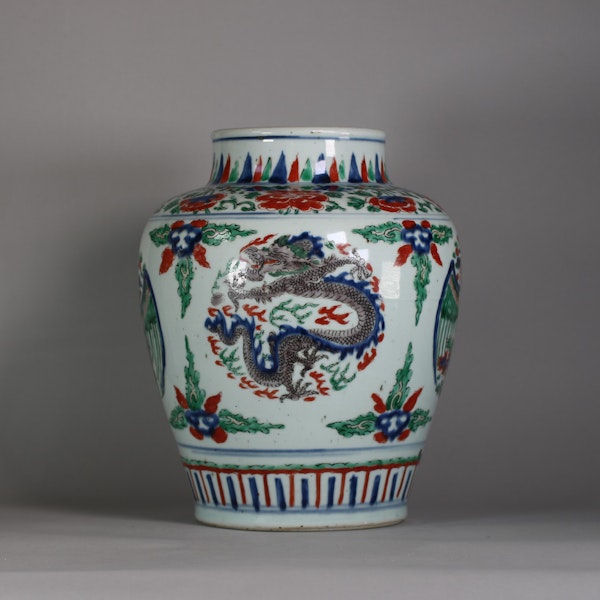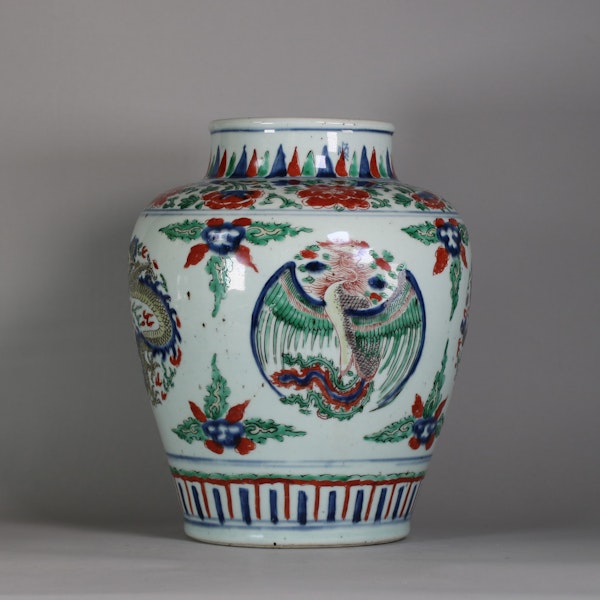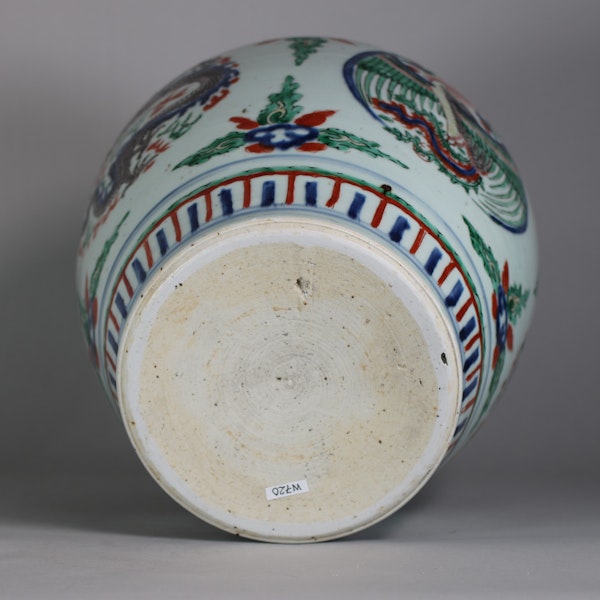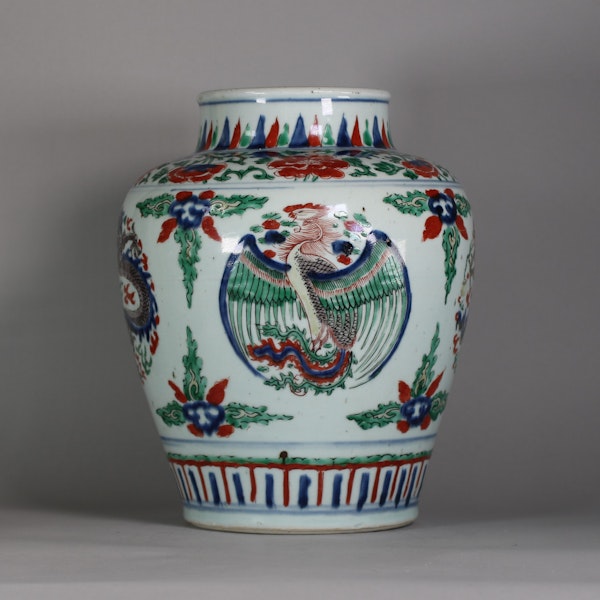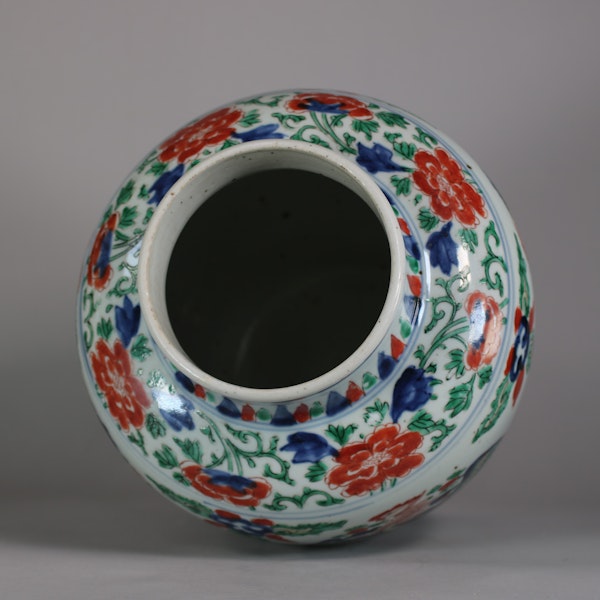Chinese wucai baluster 'dragon' vase, Chongzhen (1627-44)
Chinese wucai baluster 'dragon' vase, Chongzhen (1627-44)
POA
Description
Chinese wucai baluster 'dragon' vase, Chongzhen (1627-44), painted with roundels containing scaly dragons chasing the pearl amongst swirling clouds alternating with roundels of phoenix amongst small florets, with bright tail plumage and wings outstretched; with cornice decoration comprising stylised leaves and clouds; the neck with a wide band of scrolling peony below a band of stiff leaves in blue, red and green and the foot with a band of lappets above a double circle in underglaze blue.
Dimensions:
Height: 30cm. (11 3/4in.)
Condition:
Filled chip to rim and 4 sealed haircracks exending from rim and 3 haircracks to body all cleaned and neatly consolidated
Notes:
The Chinese dragon (‘long’ 龍 or ‘loong’ 龙) has been a prominent mythological creature in Chinese folklore for millennia. While it is commonly believed that the dragon was originally worshipped as part of animistic ritual in China, the mythical beast came to be associated more specifically with control of water, including the sea, rivers and associated weather events such as typhoons. The Dragon was also celebrated as a bringer of good fortune and a symbol of strength; it was adopted as an Imperial icon from at least the Han dynasty onwards. Meanwhile, the phoenix, or fenghuang, was a sacred bird of Chinese mythology believed to be king of all birds and symbol of good fortune, fertility and longevity. It is often depicted with the head of a pheasant, a long neck and the tail of a peacock. In ancient China, the fenghuang had consisted of two separate entities to represent yin and yang; the male bird (鳳, feng) and female (凰 huang), but during the Ming the two gradually merged to become the symbol of female royalty, while the dragon was associated with the Emperor. Dragons and phoenixes are thus frequently depicted together in visual art and ceramic design in an auspicious combination that symbolises the balance and harmony between male and female, good fortune, prosperity and strong leadership. Such objects were deemed particularly suitable for wedding gifts: one of the many popular good luck phrases used to congratulate a couple on their marriage is ‘龙凤呈祥’ (long feng cheng xiang) and roughly translates to ‘the dragon and phoenix together bring good fortune’.
| item details | |
|---|---|
| Material and Technique | Porcelain with underglaze blue and overglaze enamel decoration |
| Origin | Chinese |
| Period | 17th Century |
| Condition | Very good |
| Dimensions | Height: 30cm. (11 3/4in.) |
Product REF: W720
